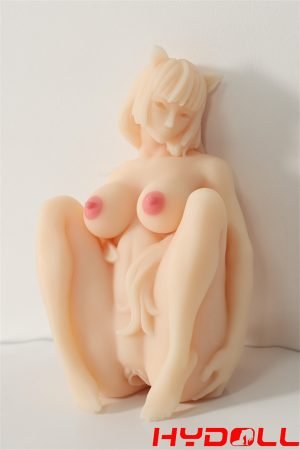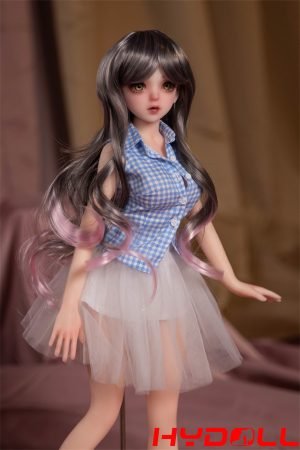The cultural background of Japanese sex dolls is a deep and diverse theme that not only reflects the complexities of sexuality and intimacy but also reveals the unique development trajectory of Japanese society in terms of sexual culture. From historical traditions to modern society, the existence and evolution of sex dolls in Japan carry multiple cultural significances.
Ancient Culture and Views on Sex
Japan’s sexual culture has a long history, deeply influenced by ancient literature, art, and religion. During the Heian period (794-1185), the expression of sexuality and emotions was viewed as a natural and important part of life. Literary works from this period, such as The Tale of Genji, not only depicted romantic relationships but also showcased a profound appreciation for female beauty, conveying an open attitude toward emotions and sexuality.

The complex emotional relationships among characters in The Tale of Genji reflect the diverse understanding of love, desire, and sexual behavior in that society. The character “Genji” is not only a charming male figure but also someone who experiences loss and loneliness in his pursuit of love. This portrayal indicates that emotional entanglements and sexual experiences were considered integral to human life in ancient Japan.

Moreover, ancient Japanese religious beliefs had a profound impact on views of sexuality. Many folk beliefs and rituals used dolls and puppets as tools for worship, symbolizing the connection between humans and deities. The use of dolls extended beyond religious contexts; they served as emotional vessels for people’s desires for love and intimacy. In this context, dolls became important symbols for exploring human nature and sexuality.
During the Edo period (1603-1868), sexual culture reached new heights. The ukiyo-e art form flourished, and many works boldly depicted sexual behavior and everyday life. These artworks were not only products of entertainment consumption but also direct expressions of society’s views on sex and beauty. Artists like Katsushika Hokusai and Utagawa Hiroshige vividly illustrated the diversity of sexuality and emotions through their works.
Edo-period shunga (erotic art) showcased a more open attitude toward sexuality and interpersonal relationships, often depicting scenarios involving dolls and puppets. This indicates that early dolls were not only used for sexual purposes but were also imbued with emotional significance. In this cultural context, the concept of sex dolls began to take shape as a means for people to explore intimate relationships.
This ancient understanding of sexuality and dolls laid the groundwork for the cultural background of modern Japanese sex dolls. Dolls evolved from early religious symbols and artistic expressions to tools for contemporary exploration of sexuality and emotions. This historical trajectory reflects Japan’s diverse understanding of intimate relationships and illustrates the continuity and transformation of ancient culture in modern society.

Anime Sex Dolls
Modern Societal Evolution
As times changed, particularly with the rapid economic development after World War II, Japanese society underwent significant transformations. From the 1960s to the 1980s, changes in family structures and the rise of individualism led to diverse expressions of sexuality and emotions. During this period, sex dolls began to gradually enter the public eye.
In this process, the function of sex dolls expanded from mere sexual toys to emotional supports. Many individuals experiencing loneliness or social anxiety turned to sex dolls as companions. This phenomenon reflects the alienation of interpersonal relationships in modern society, as noted by sociologists who state, “In highly developed urban environments, the feeling of isolation becomes increasingly apparent.”
For instance, a 35-year-old single man, in an interview, shared that his teen sex doll not only satisfied his sexual needs but also provided emotional support, helping him alleviate social anxiety. This is a common sentiment in Japan, where many view sex dolls as a means of understanding and accepting themselves.



Expression of Gender and Identity
The culture surrounding sex dolls in Japan also involves expressions of gender and identity. As gender roles become increasingly blurred, many consumers seek dolls that align more closely with their emotional needs. For some male consumers, sex dolls serve not only as sexual partners but also as mediums for exploring gender identity and emotional expression.
Many manufacturers have introduced diverse doll designs to cater to various genders and sexual orientations. This phenomenon reflects Japan’s gradual openness and inclusivity regarding gender and sexual relationships.
Interweaving Technology and Culture
Technological advancements have made modern sex dolls not only highly realistic in appearance but also increasingly integrated with interactive features. This shift transforms dolls from static objects into active participants in users’ lives. Many consumers report that the emergence of smart sex dolls enhances their emotional connection, further deepening their reliance on these dolls.
This trend is closely related to Japan’s technological culture. As a global leader in technology, Japanese society is relatively open to robots and smart devices, making the intelligent evolution of sex dolls a natural part of cultural development.Help people improve sexual desire realistic adult silicone doll
Conclusion
The cultural background of Japanese sex dolls is not merely a discussion of sexuality and intimate relationships; it also represents a profound reflection on social change, gender identity, and technological progress. They play multiple roles in modern society, reflecting people’s complex understandings of loneliness, emotions, and interpersonal relationships. As societal views continue to evolve, the cultural significance of sex dolls will likely develop further, becoming an important aspect of future cultural discussions.
-
Product on sale
 Plump Shy Asian Pink Temptation High-Quality Sex Doll 150cm with Silicone Head$1,439
Plump Shy Asian Pink Temptation High-Quality Sex Doll 150cm with Silicone Head$1,439 -
Product on sale
 Orange In 154cm D-Cup Ros Head Full Silicone Sex Doll Perfect Lifelike Experience$2,199
Orange In 154cm D-Cup Ros Head Full Silicone Sex Doll Perfect Lifelike Experience$2,199 -
Product on sale
 Perfect Body Seductive Curly Hair Silicone Love Doll 154cm with Oral Capability$2,199
Perfect Body Seductive Curly Hair Silicone Love Doll 154cm with Oral Capability$2,199 -
Product on sale
 D-Cup 148cm Campus Lesbian Sex Doll Full Silicone Japanese Sex Doll ROS Head$1,999
D-Cup 148cm Campus Lesbian Sex Doll Full Silicone Japanese Sex Doll ROS Head$1,999 -
Product on sale
 Nicole 22-Year-Old Popular Beauty Ultra-Realistic Sex Doll for a True-to-Life Experience$1,429
Nicole 22-Year-Old Popular Beauty Ultra-Realistic Sex Doll for a True-to-Life Experience$1,429 -
Product on sale
 May Silicone Head Hair-Implanted Love Doll Feel the Love of the Gentle Queen$1,499
May Silicone Head Hair-Implanted Love Doll Feel the Love of the Gentle Queen$1,499 -
Product on sale
 148cm Blonde Sex Doll Ready to Ship Enjoy Dress-Up Fun at Home$719
148cm Blonde Sex Doll Ready to Ship Enjoy Dress-Up Fun at Home$719 -
Product on sale
 G-Cup 148cm Sunny and Confident Best Recommended Sex Doll$719
G-Cup 148cm Sunny and Confident Best Recommended Sex Doll$719 -
Product on sale
 Fatal Temptation Porn Doll with the Best Curvy Body Implanted Hair Realistic BBW Sex Doll$719
Fatal Temptation Porn Doll with the Best Curvy Body Implanted Hair Realistic BBW Sex Doll$719 -
Product on sale
 Experience Exotic Sex 148cm Seductive Big-Breasted Young Latina Sex Doll$719
Experience Exotic Sex 148cm Seductive Big-Breasted Young Latina Sex Doll$719 -
Product on sale
 4ft11 TPE Adult Slim Love Doll G-Cup Lightweight Sex Doll Lifelike$759
4ft11 TPE Adult Slim Love Doll G-Cup Lightweight Sex Doll Lifelike$759 -
Product on sale
 Customizable Cheap European Blonde Thick Lip Sex Doll$759
Customizable Cheap European Blonde Thick Lip Sex Doll$759































